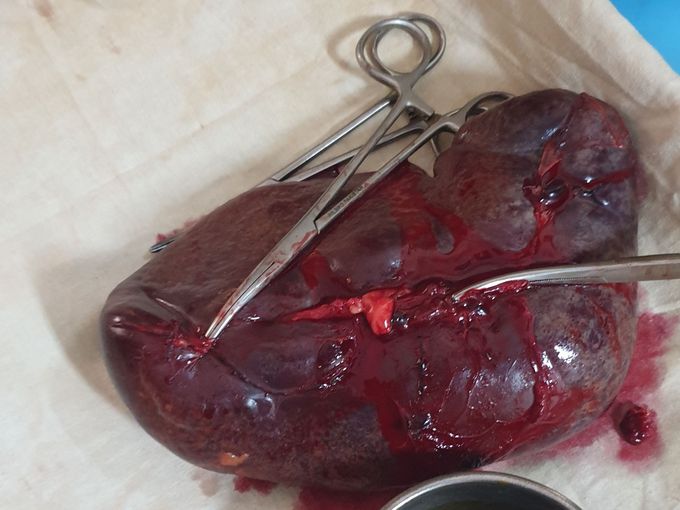


Indication of Surgery- Splenomegaly with Hypersplenism Name of Surgery- Open Splenectomy
📌What is Hypersplenism? Hypersplenism occurs due to hyperactivity of the spleen and defined as a triad of splenomegaly, pancytopenia and normocellularity of bone marrow. 📌Hypersplenism is a secondary process that can arise from splenomegaly of almost any cause. Splenomegaly increases the spleen’s mechanical filtering and destruction of red blood cells (RBCs) and often of white blood cells (WBCs) and platelets. Compensatory bone marrow hyperplasia occurs in those cell lines that are reduced in the circulation. Diagnosis of Hypersplenism Physical examination, sometimes ultrasonography Complete blood count Hypersplenism is suspected in patients with splenomegaly and anemia or cytopenias. Evaluation is similar to that of splenomegaly. Unless other mechanisms coexist to compound their severity, anemia and other cytopenias are modest and asymptomatic (eg, platelet counts, 50 to 100 × 103/mcL [50 to 100 × 109/L]; white blood cell counts, 2500 to 4000/mcL [2.5 to 4 × 109/L] with normal white cell differential count). Red blood cell morphology is generally normal except for teardrop forms and occasional spherocytosis. Reticulocytosis is usual. ABOUT THE SURGERY Surgical splenectomy is a traditional treatment for hypersplenism; however, splenectomy is associated with significant postoperative complications. Splenic artery embolisation (SAE) has been widely used as an alternative to splenectomy for the treatment of hypersplenism because it is minimally invasive and associated with fewer complications

